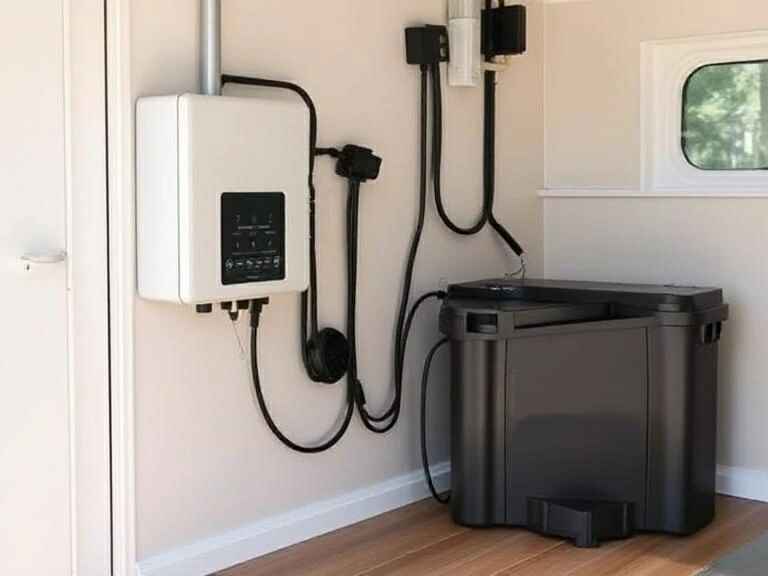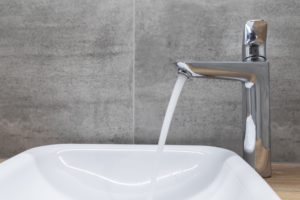If there is anything less reliable than a bank employee taking their lunch break, it has to be Indian electricity companies. Power cuts are not a new thing here. According to a 2023 Local Circles study, daily power disruptions affected 85% of homes spread over 272 districts; 57% experienced up to two hours, and 37% experienced two to eight hours daily. Similar patterns continued in 2024 and 2025, particularly in summer. In such a case, having a reliable power backup is quite important.
This is where an inverter comes to play, it’s a safe and reliable power backup option that you can lean back on. But what is it? How does it work? And should you install it in your house? These questions often pop up in people’s minds.
Inverter: Definition and Need
When you look online at what an inverter is, you get answers that make everything super complicated. To keep it simple, here we have explained just what you need to know:
Since most appliances run on AC, and the power backup is stored in the battery in the form of DC, the inverter converts the DC into AC. For a variety of electrical devices to function effectively, inverters are necessary.
For your home and office appliances to run smoothly during blackouts, power inverters are necessary for a continuous energy source. These inverters provide dependable and constant power backup for your peace of mind, owing to their cutting-edge technology and long-lasting operation.
Different Types of Inverters Explained
There aren’t one, but many types of inverters. Each inverter type has its own usage.
Square wave inverter
This inverter produces a square wave voltage output. Since most appliances are designed for a sine wave supply, people opt for this type of inverter less. Unlike the smooth, oscillating sine wave that most household appliances are designed to run on, a square wave has abrupt transitions, which can be harsh on sensitive or inductive devices like refrigerators, TVs, and audio systems. While this inverter is comparatively inexpensive, its usage is limited.
Sine wave
The voltage’s sine wave output provides us with a power that is quite comparable to that of the utility supply. This makes it highly compatible with all types of appliances and equipment, as most are specifically designed to operate on sine wave power. The key advantage of this inverter is its ability to ensure optimal performance and longevity of sensitive devices such as laptops, refrigerators, and medical equipment. Although more costly, this kind of inverter is frequently used in both business and residential settings.
Modified sine wave
This kind of inverter has an easier construction than a pure sine wave inverter, but it is more complicated than a basic square wave inverter. It doesn’t produce a true sine wave or a simple square wave. Instead, it generates a stepped waveform that roughly approximates the shape of a sine wave. This type of output is sufficient for many standard appliances.
Smart and Hybrid Inverters
All three kinds of inverters come with some form of liability, which is why people nowadays are moving towards smart and hybrid inverters. They’re compatible with both solar and non-solar power sources. Demand for smart inverters with integrated advanced monitoring and energy management functions is steadily increasing in the hybrid inverter market. These intelligent inverters provide both energy flow control and remote system monitoring. Installing inverters with smart technology is becoming more and more popular among homeowners and businesses due to their cost and convenience advantages.
Choosing the Right Inverter for Your Home or Office
But the question is, how can you choose the right inverter for your home or office? There are a few steps you need to take before you pick the right inverter.
- Step 1: The first thing you need to do is estimate how much power you need daily. It can be done by calculating how many units you consume in a month and how many watts of power you need.
- Step 2: Then you need to know the voltage-ampere and battery capacity. The VA (Volt-Ampere) rating indicates how much load the inverter can handle.. Match it with a battery that fits your consumption. For ordinary Indian homes, say 150 Ah or 200 Ah.
- Step 3: Understand the type of load you’re going to put on the inverter. For example, bulbs, fans, and TVs put a resistive load on the inverter, which is easy for the inverter, while fridges, mixers, and ACs need higher power during startup and put an inductive load on the inverter. So, make sure to choose an inverter that can handle both.
- Step 4: Make sure your inverter is solar capable. With the government pushing for solar panels, a solar-compatible inverter is a smart choice for your home.
Battery Matters: Inverter Battery Types You Should Know
Other than an inverter, you also need a good battery to pair with it. But when you look online, you will find so many battery options that making the right choice becomes a herculean task. Which is why it is important to know the different types of inverter batteries. They are:
Lead-Acid Batteries
Known for their reliability and being budget-friendly, lead-acid inverter batteries have been in use for a while. They operate on the basic principle of storing electrical energy and releasing it when required. The main components of lead-acid batteries are sulfuric acid, lead plates, and lead oxide plates. Sulfuric acid serves as the electrolyte, and the lead plates serve as the positive and negative terminals to manage the flow of power.
Tubular Batteries
Tubular batteries are significantly larger lead-acid batteries than flat plate batteries. Inverter and UPS systems both use tubular batteries. The tubular battery’s positive plate is concealed behind a cloth-wrapped tube that holds the power. They don’t need to be maintained as often as regular lead-acid batteries need to be and have a higher lifespan.
Lithium Iron Phosphate Batteries
The best type of lithium battery is the lithium-iron battery, also called LiFePo4 batteries, if you are into technicalities. Li-iron batteries are made up of the same parts as regular batteries: an anode, electrolyte, separator, current collector, and cathode. A graphite carbon electrode with a metallic backing serves as the anode in a lithium-iron battery, while lithium-iron phosphate serves as the cathode.
In addition to the normal benefits of lithium-based batteries, lithium iron phosphate batteries have improved safety due to their increased chemical and thermal stability. Because LiFePo4 batteries are more dependable, stable, and require no maintenance, they can significantly increase the overall efficiency of your inverter.
Conclusion
Inverters are very important in the summer to ensure your comfort when the power goes out. It is also important to choose the right type of inverter along with the right type of battery. With all the knowledge shared above, explore the options available, invest in a good brand, and go worry-free!



Be First to Comment